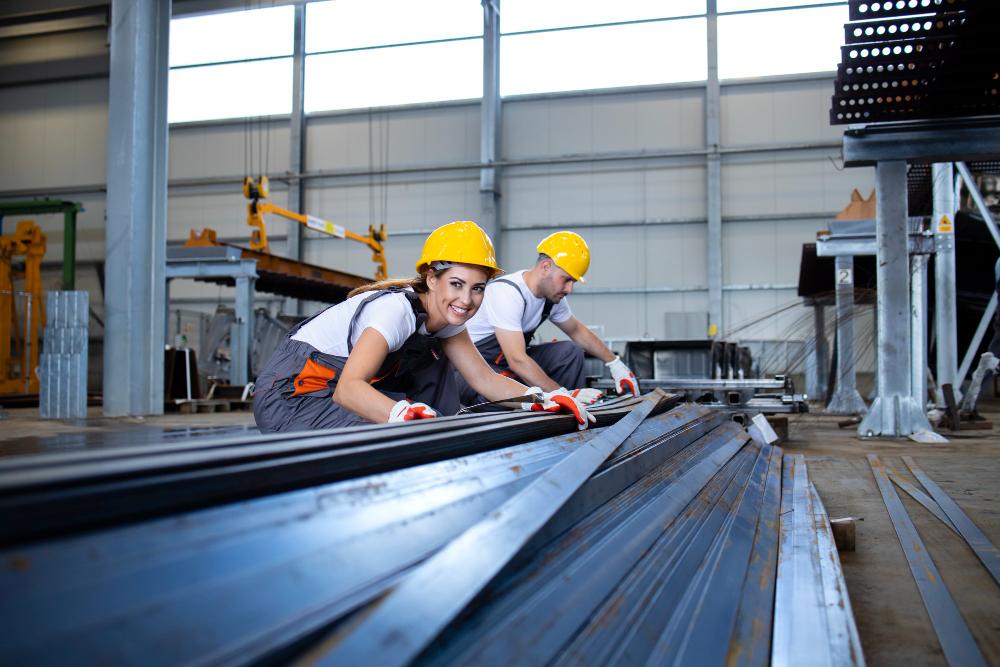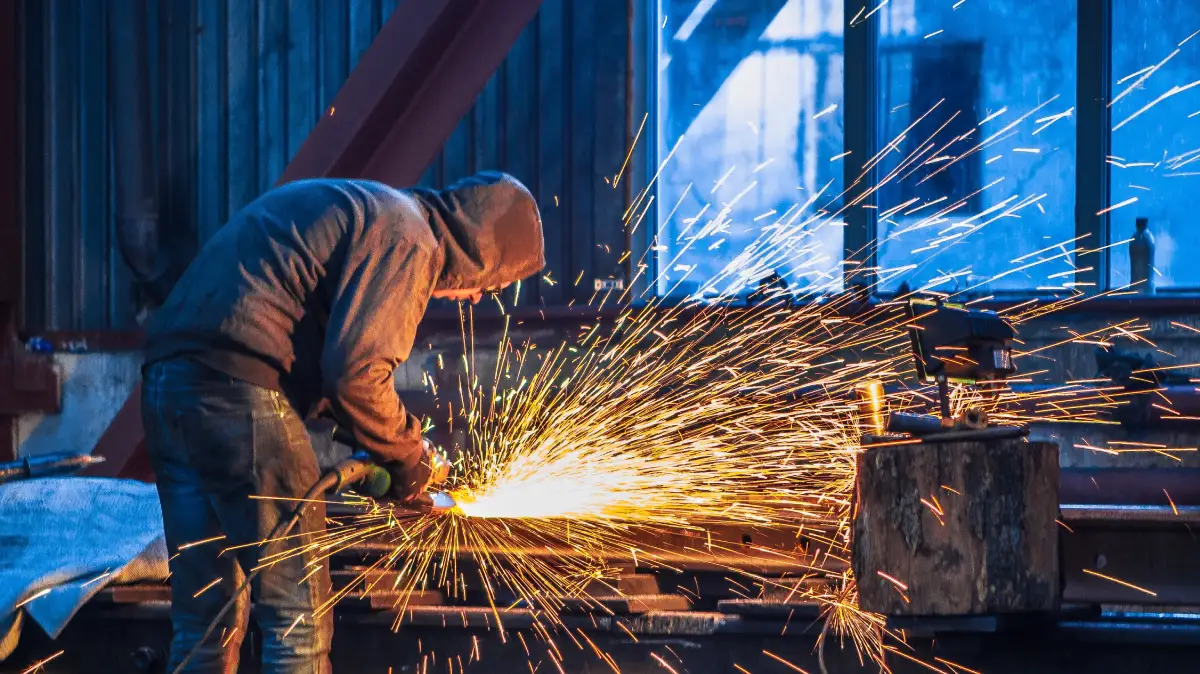The Art of Steel: Transforming Raw Metal into Architectural Masterpieces.
The transformation of raw metal into stunning architectural elements demands expertise and a strategic approach. At Dark Horse Iron Works, we understand that selecting the right method is paramount for achieving both aesthetic brilliance and structural integrity. Here are key approaches:
- Traditional Forging and Handcrafting: This method relies on skilled artisans heating and shaping metal by hand. It's ideal for creating unique, intricate designs with a distinct artisanal touch, perfect for decorative iron works services and custom pieces where a human element is desired over machine precision.
- Advanced CNC Machining and Laser Cutting: Utilizing computer-controlled machinery, this approach offers unparalleled precision and repeatability. It excels in producing complex geometries and large volumes with exact specifications, often employed in structural steel contractors projects and large-scale industrial metal works services.
- Hybrid Fabrication and Welding: Combining various techniques, including cutting, bending, and specialized welding, this method provides immense versatility. It allows for the integration of diverse components and materials, making it a go-to for complex custom steel design and build projects requiring robust assembly.
When evaluating these fabrication methods, several critical criteria guide the decision-making process, ensuring the final product aligns with project demands and expectations:
- Precision and Tolerance: Assess the required accuracy of dimensions, fit, and surface finish. This dictates whether minute variations are acceptable or if absolute uniformity is essential for structural or aesthetic reasons.
- Aesthetic Versatility: Consider the range of design possibilities and the visual impact desired. Does the project call for organic, flowing forms, sharp, modern lines, or a blend of both?
- Structural Integrity and Durability: Evaluate the strength, load-bearing capacity, and expected longevity of the finished piece. This is crucial for safety and long-term performance, especially in load-bearing applications.
- Cost-Effectiveness and Scalability: Analyze the overall project budget and the ability to scale production from a single prototype to multiple units. Efficiency in material use and labor also plays a significant role.
Comparative Analysis of Fabrication Approaches
Traditional forging and handcrafting excel in aesthetic versatility, offering unparalleled opportunities for unique, artistic expression. Each piece carries the distinct mark of the artisan, making it ideal for custom iron and steel fabrication where individuality is prized. However, this method typically yields lower precision and tolerance compared to machine-driven processes, with slight variations inherent to handwork. While providing excellent structural integrity for many applications, its durability often depends on the skill of the local welding and metal works artisan.
Conversely, advanced CNC machining and laser cutting stand out for their exceptional precision and tolerance. These methods can achieve incredibly tight specifications, making them indispensable for components requiring exact fits, such as those used by structural steel contractors. Their aesthetic versatility, while vast in geometric complexity, can sometimes lack the organic warmth of hand-forged items. However, they deliver consistent structural integrity due to precise cuts and minimal material stress, ensuring high durability.
Regarding cost-effectiveness and scalability, traditional forging is generally more expensive for mass production due to intensive labor, though it's cost-effective for unique, one-off decorative iron works services. CNC machining, while having higher initial setup costs, becomes highly cost-effective and scalable for large production runs, making it suitable for industrial metal works services. The ability to rapidly produce identical parts with minimal human intervention significantly reduces per-unit costs and speeds up delivery times.
Hybrid fabrication and welding strike a balance, offering robust structural integrity and durability by combining the best aspects of various techniques. This approach allows for complex assemblies that might be impossible with a single method, providing superior strength for demanding applications. Its precision and tolerance can be very high, especially when using advanced welding and assembly jigs, though it relies heavily on the expertise of the fabrication team, such as those found in a precision metal fabrication shop.
From an aesthetic perspective, hybrid methods offer considerable versatility, allowing for the integration of different material finishes and forms. A custom steel design and build project might involve laser-cut components welded to hand-forged elements, creating a visually rich and structurally sound piece. This flexibility makes it highly adaptable for projects that require both intricate detailing and robust construction, blending artistic vision with engineering practicality. 
In terms of cost-effectiveness and scalability, hybrid approaches can be moderately scalable. While more local welding and metal works labor-intensive than pure CNC, they offer more design freedom than traditional forging alone. The ability to source and integrate various components efficiently helps manage costs, making it a pragmatic choice for many bespoke projects, including residential iron fabrication company needs or specialized iron welding and repair services.
Strategic Recommendations for Method Selection
For projects prioritizing unparalleled artistic expression and unique character, such as custom gates, railings, or bespoke sculptures, traditional forging and handcrafting remain the superior choice. This method imbues metal with a distinct soul, perfect for residential iron fabrication company needs where individual style is paramount. While potentially requiring a longer lead time and higher cost per piece, the resulting aesthetic value is often unmatched, reflecting the skilled craftsmanship.
When the project demands extreme accuracy, repetitive parts, or complex geometric forms for large-scale construction or industrial applications, advanced CNC machining and laser cutting are indispensable. These methods ensure consistent quality, tight tolerances, and efficient production, crucial for structural steel contractors. They are ideal for high-volume orders where precision and speed are critical, minimizing waste and maximizing output for industrial metal works services.
For intricate custom steel design and build projects that require a blend of strength, precision, and unique design elements, the hybrid fabrication and welding approach offers the most comprehensive solution. This method allows for the integration of diverse components and materials, enabling complex assemblies that are both structurally sound and aesthetically pleasing. It’s particularly effective when seeking a balance between artisanal flair and engineering rigor.
Ultimately, the optimal choice depends on the specific project parameters: budget, timeline, aesthetic goals, and structural requirements. Consulting with experienced professionals, such as the team at Dark Horse Iron Works, can help determine the most suitable fabrication method to transform your vision into a durable and beautiful architectural masterpiece, ensuring that every detail aligns with your aspirations.

